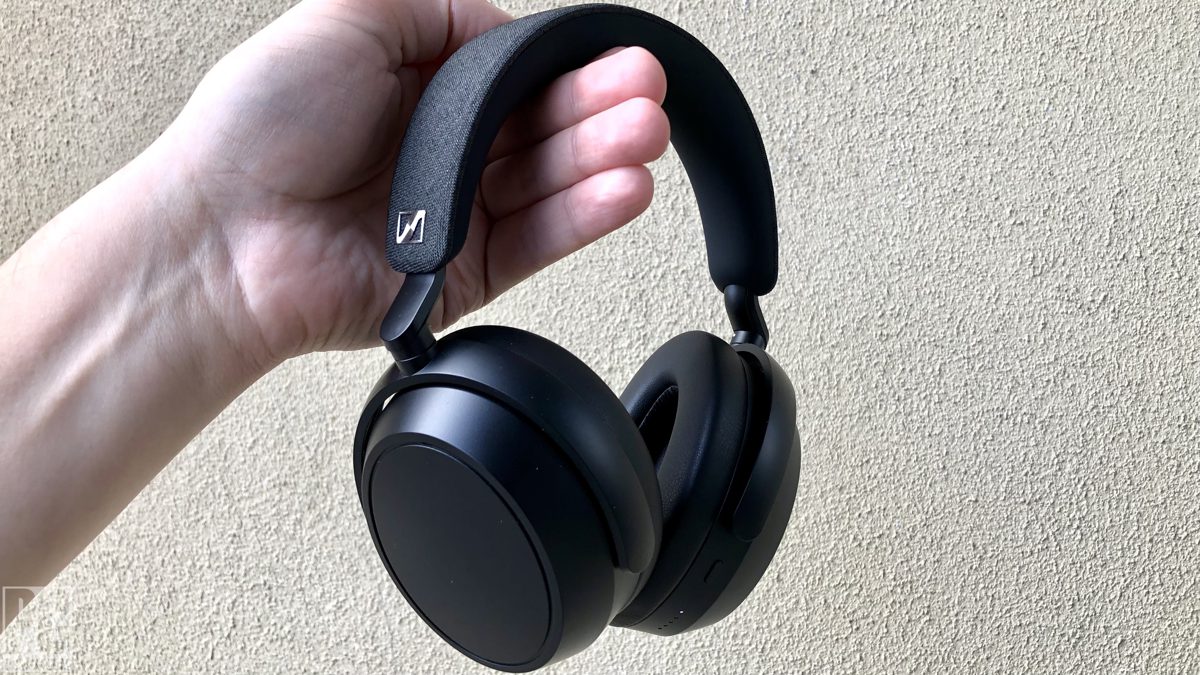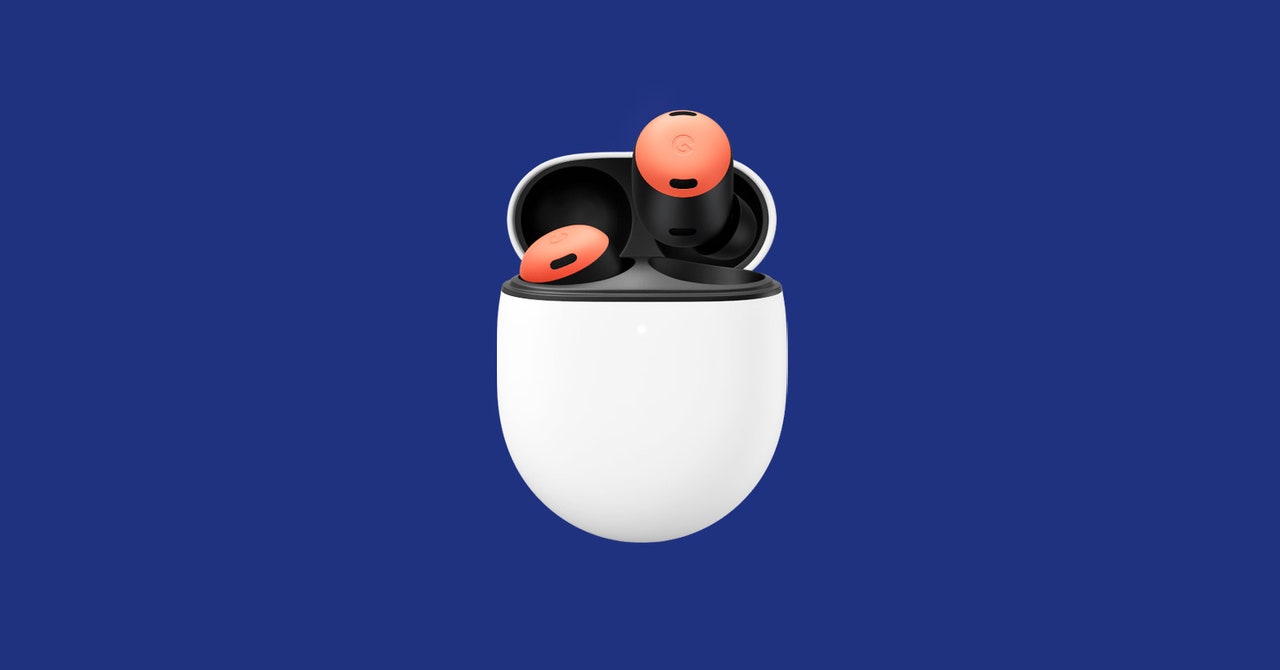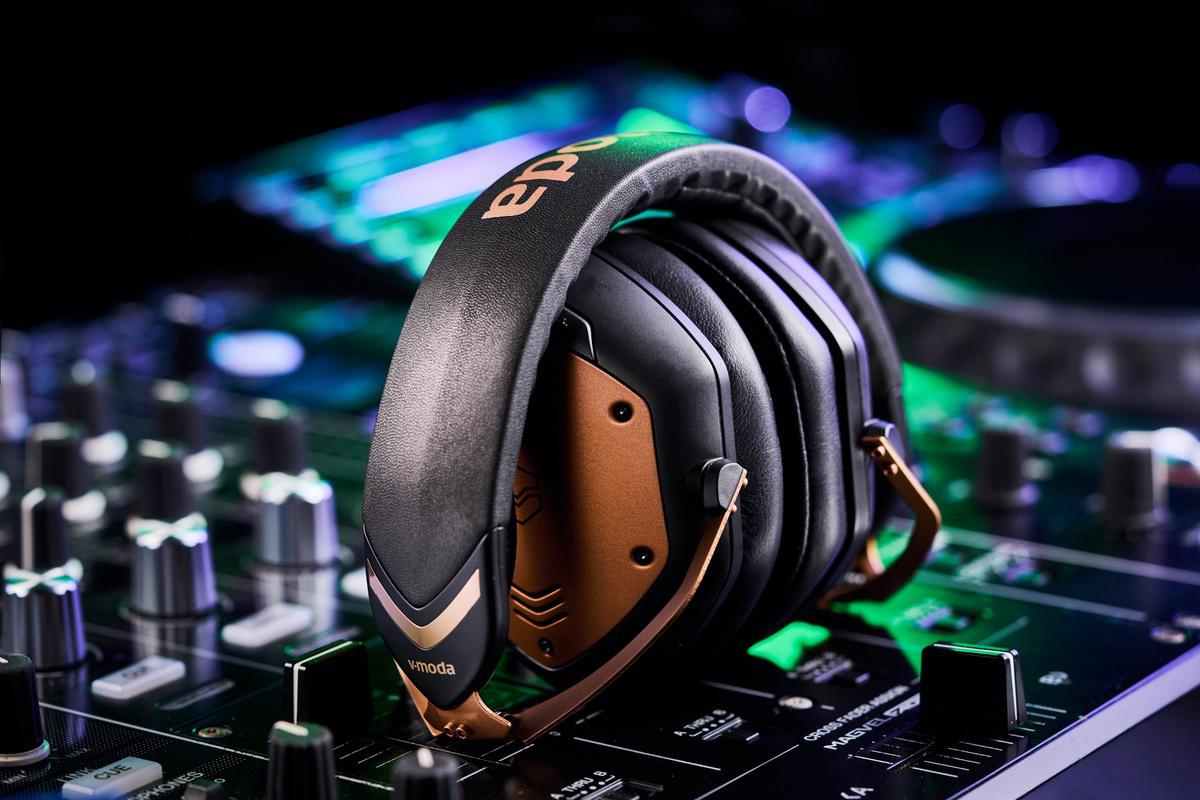Sennheiser’s Momentum 4 Wireless noise-cancelling headphones ($349.95) are a marked departure from past entries with a completely different look and a revamped app experience. They easily compete with the top-rated Sony WH-1000XM5 ($399.99) and Bose QuietComfort 45 ($329) in terms of audio quality, offering a bass-forward-but-balanced sound signature with excellent clarity. They don’t quite offer the same class-leading active noise cancellation (ANC) as either of those models, but they’re in the same ballpark at least. And although we like the app’s features, we’d prefer more granular control than its streamlined EQ allows. These minor drawbacks aside, the Momentum 4 Wireless headphones are a worthy alternative to our favorites from Bose and Sony.
Streamlined Design, Long Battery Life
The Momentum 4 Wireless headphones are exceptionally comfortable even for long listening sessions. The earcups swivel to fit your head and ensure a tight, secure fit.
You can choose between black or white models, but both feature the same gray fabric lining on top of the headband. Notably, they look distinct from Momentum 3 Wireless headphones, which use a metallic headband adjustor. The earcups are more oval-shaped on the new model, too. Faux leather covers the memory foam earpads, while recessed cloth grilles clearly mark the left and right sides.

Internally, 42mm dynamic drivers deliver a frequency range of 6Hz to 22kHz. The headphones are compatible with Bluetooth 5.2, plus support the AAC, AptX, AptX Adaptive, and SBC codecs. This is the kind of wide-ranging codec support we expect in this price range, but don’t always see. That said, Sony’s headphones have a slight edge here because they also support the LDAC codec, which offers a higher maximum bitrate.
The right earcup’s side panel sports a button that handles power and pairing, as well as summons your device’s voice assistant. It sits alongside five tiny status LEDs. There’s a USB-C port at the base of the earcup for the USB-C-to-USB-A charging cable that arrives in the box.
The right ear’s outer panel functions as a capacitive touch control pad and works quite well. That said, like all touch panels this large, it’s easy to accidentally trigger it when you handle the headphones. Regardless, a single tap in the center controls playback, while forward and backward swipes handle track navigation and phone calls (forward to answer, backward to end). Swipes up and down to control the volume. You can also tap twice to toggle between ANC On and Transparency modes. If you perform these successive taps quickly enough, this gesture doesn’t affect playback, but we occasionally paused the music unintentionally. You can also use a two-finger swipe gesture to toggle between the modes—pinch and expand for Transparency or pinch and draw inward for ANC. Optionally, you can turn off the touchpad controls entirely within the app.
Sennheiser estimates that the headphones can last roughly 60 hours on battery at mid-level volumes with ANC on. Turning the ANC off should get you even more battery life, though listening at top volume levels will lower the runtime. Regardless, 60 hours is an impressive figure. Sennheiser says the battery takes roughly two hours to fully charge from empty and that five minutes of charging gets you roughly four hours of playtime, but these numbers depend on your charging source and headphone usage.
The thoughtfully designed zip-up travel case’s exterior matches the headband’s material (in our case, a gray fabric with a slight sheen). A loop for hanging the case from a hook extends from the outer side panel. The headphones swivel flat to fit inside, and each accessory (the USB cable, an airline jack adapter, and a 3.5mm audio cable) comes with an elastic band so you can keep everything tidy. Additionally, the case features a small mesh pocket for storage.
Sennheiser App Experience
The Sennheiser Smart Control app (available for Android and iOS) offers plenty of features beyond the standard over-the-air firmware updates and basic settings (such as on-head detection, smart pause, and auto-power off).
The main menu has a Connection section (for switching between the maximum two paired devices), an EQ section with adjustable presets (the three-band EQ is a little basic, but at least works in conjunction with Bass Boost and Podcast toggles), a Sound Check section (that creates an EQ preset based on a few parameters you specify after listening to music you’re familiar with), and a Sound Zones section (which helps create ANC and EQ presets for up to 20 locations that automatically turn on when you enter those places).

Farther down in the app, the ANC section offers an Adaptive ANC toggle, as well as a slider that lets you blend the ANC and Transparency modes—the left-most position is for full ANC and the right-most position is for full transparency. You can also enable Wind Noise Reduction (Auto, Off, or Max) and set the auto-pause feature to turn on whenever Transparent mode is active. Lastly, a fader in the Sidetone section lets you control how much of your voice you hear on calls.
In the settings menu, you can also choose to hide the various sections of the menu to streamline the app’s home screen. Notably absent is a section for customizing the on-ear gestures, but that feature is more typical of earphones with limited real estate for touch controls.
It’s a little annoying that Sennheiser requires you to create an account to access some of these features, but at least it doesn’t block access to the app altogether. An increasing number of audio companies apparently now want your email. Our main complaint with the app, however, is that the three-band EQ feels unnecessarily simplified—plenty of competing apps offer far more bands and actually bother to label the bands with frequencies. The app was slightly inconsistent in connecting with the Momentum 4 Wireless headphones, too—more than once in testing (and after we installed all available firmware updates), the app didn’t recognize the headphones despite them being paired to our iPhone at the time .
Highly Effective ANC
The headphones deliver high-quality noise cancellation. Unsurprisingly, we had the most success with the maximum ANC level and Adaptive ANC on. With Adaptive ANC off, the ANC lets through a faint hiss (though one that’s really only noticeable in quieter environments).
In testing with the above settings, the headphones dial back powerful, low-frequency rumble (like you hear on an airplane) significantly and don’t produce any sort of masking hiss. They also effectively cut back noise from a recording of a busy restaurant with clanging dishes and boisterous conversation. We weren’t able to test the Wind Noise Reduction feature (which combats unwanted noise as a result of wind hitting the ANC mics), but we suggest leaving it in the default Auto mode.
It’s difficult to say whether the ANC has an obvious effect on the audio performance because there’s no way to turn it off completely; you can only toggle between ANC and Transparency modes or opt for some blend of the two. We didn’t notice any significant audio performance difference when we switched between the two modes in testing.
Compared with the Sony WH-1000XM5, the Sennheiser headphones let through a little bit more of the lows and low-mids in environments with intense, deep frequencies. In a noisy cafe-like setting, the Momentum 4 Wireless headphones allowed a thin band of higher frequencies to slip through that the WH-1000XM5 didn’t—but both are very effective against lows, mids, and, to a reasonable extent, the high-mids. Neither competes with the Bose QuietComfort 45’s level of noise cancellation in these scenarios, however.
Transparency mode effectively provides a clear way for you to hear your surroundings without removing the headphones. And, as mentioned, you can set the pair to auto-pause your music whenever this mode is active. The app doesn’t provide anything beyond a basic transparency function, though—some apps offer a conversation mode that emphasizes the human voice.
Fantastic Audio and Strong Mics
We tested the audio performance primarily without any EQ or Bass Mode enhancements. On tracks with intense sub-bass content, like The Knife’s “Silent Shout,” the headphones produce a powerful low-frequency response. The bass doesn’t distort at maximum volume levels, and at more moderate levels, the audio still sounds robust.
Bill Callahan’s “Drover,” a track with far less deep bass in the mix, gives us a better sense of the sound signature. The drums on this track sound bass-boosted and heavy, but don’t quite veer into unnaturally thunderous territory. Interestingly, the Bass Boost mode doesn’t really add too much thunder, either, though it does beef up the lows somewhat. Callahan’s baritone vocals sound rich and crisp, while the acoustic strums and higher-register percussive hits maintain a bright, detailed presence. If you want a more clinically accurate sound, you can dial back the lows slightly in the app’s EQ, but as is, this is a balanced, if somewhat sculpted, sound signature.

On Jay-Z and Kanye West’s “No Church in the Wild,” the kick drum loop receives an ideal high-mid presence that allows its attack to retain its punchiness, while the sub-bass synth hits that punctuate the beat come across with an ideal depth. The sub-bass doesn’t sound overly emphasized, but no one will accuse the headphones of skimping on subwoofer-like thump. We can tell that the pair enhances the lows somewhat, but they don’t add sub-bass where it doesn’t exist (unlike plenty of modern headphones). The vocals on this track sound clear, with perhaps a bit of additional sibilance.
Orchestral tracks, like the opening scene from John Adams’ The Gospel According to the Other Mary, sound fantastic. The lower-register instrumentation has a rich, full presence, but the spotlight belongs to the higher-register brass, strings, and vocals. This is a crisp, detailed sound signature with excellent anchoring in the lows—subtle on classical and jazz tracks, but capable of delivering the rumble you want from electronic music and some modern mixes.
The four-MEMS-mic array performs very well. We had no problem understanding every word from a test recording on an iPhone. The beam-forming mics (two are in each earcup) deliver an EQ-ed signal that zeroes in on the voice and successfully tamps down surrounding noise.
Sennheiser Strikes Back
The Sennheiser Momentum 4 Wireless headphones deliver excellent audio performance and support a strong array of Bluetooth codecs. The ANC here is quite good too—not the best, but fit to hang with the top models. We also like the new design and the option to tweak the audio in the app (although the EQ section could benefit from more bands). The headphones are a bit more affordable than the top-notch Sony WH-1000XM5, and comparable in price with the Bose QuietComfort 45. The Bose model edges out the Momentum 4 in terms of ANC, but we can at least argue that Sennheiser’s pair sounds the best of the bunch.
If all of these models are outside your budget, you should consider Sennheiser’s $199.95 HD 450BT headphones, which offer impressive ANC and audio, just obviously not on the same level as these other pairs. If you have room in your budget and are more focused on audio than noise cancellation, we’re also fans of the luxurious Bowers & Wilkins Px7 S2 ($399.99). At the very least, however, the Momentum 4 Wireless headphones deserve a spot in this high-end audio conversation.
.










